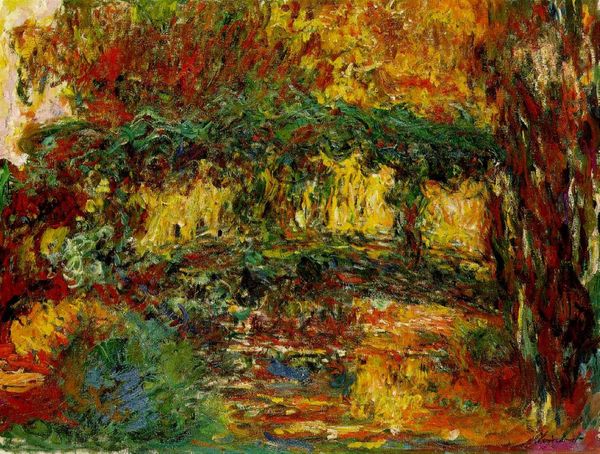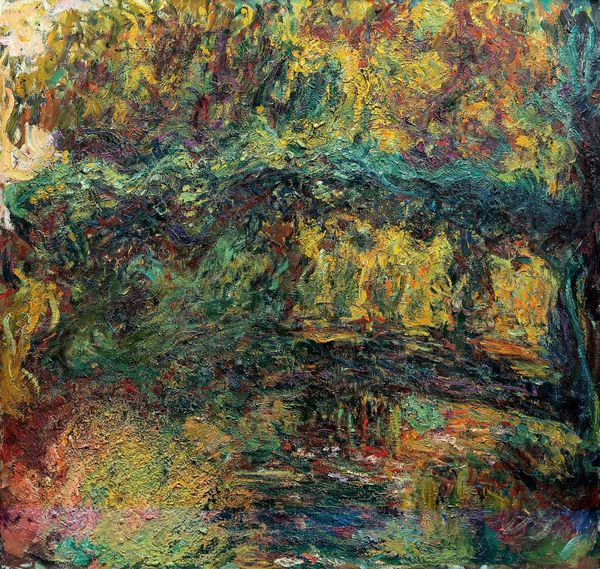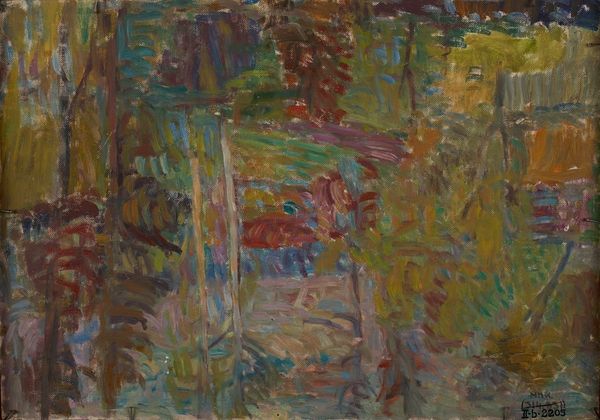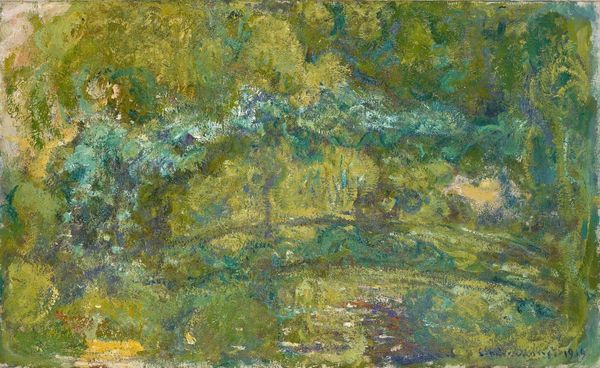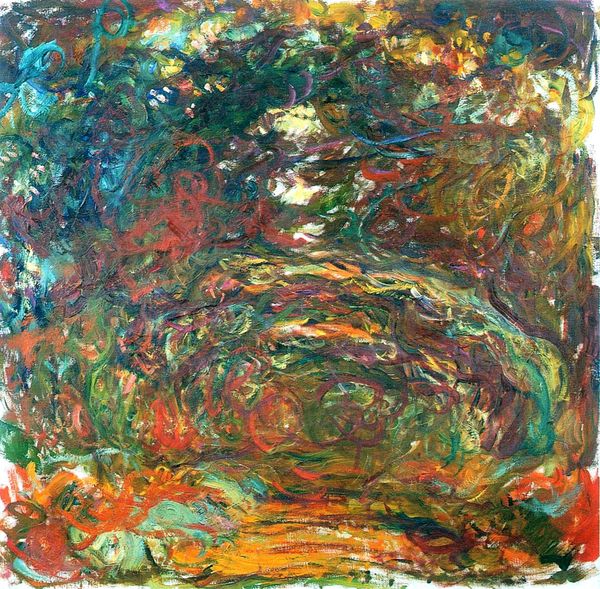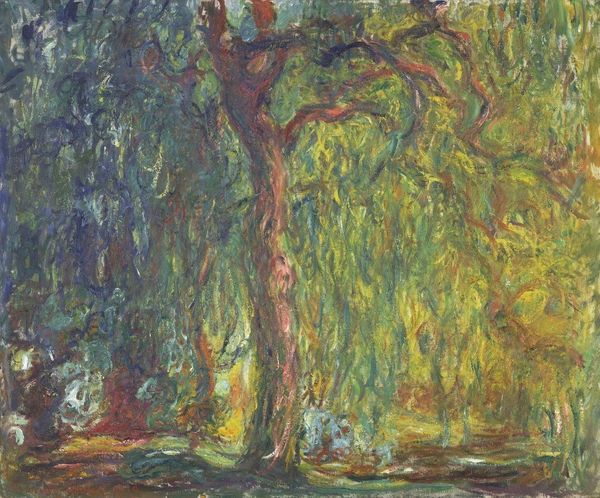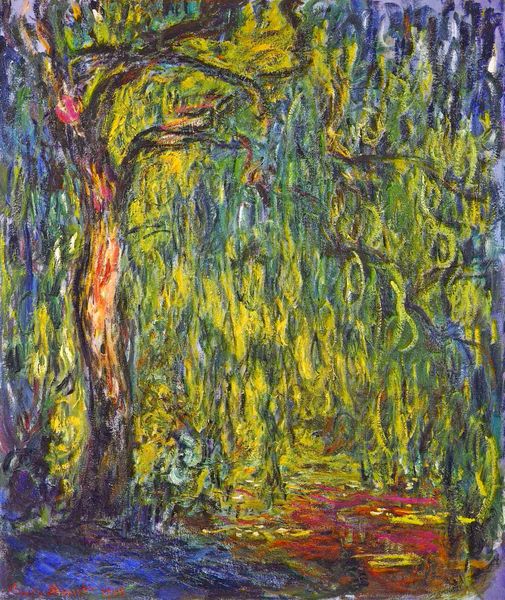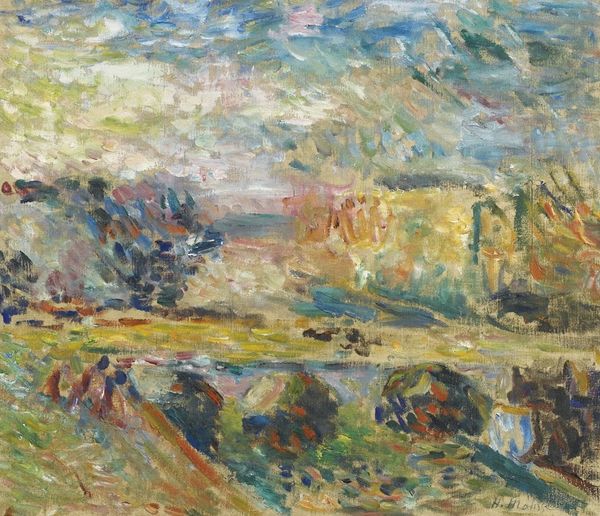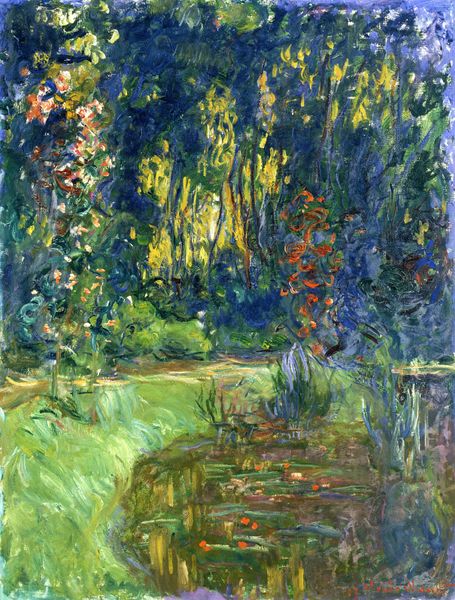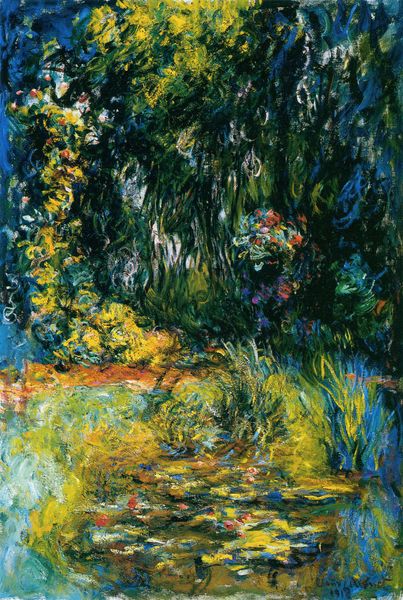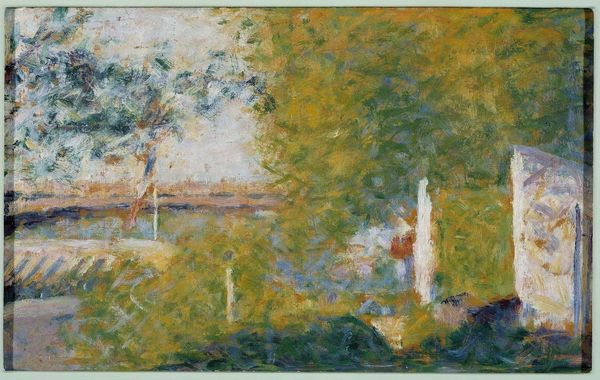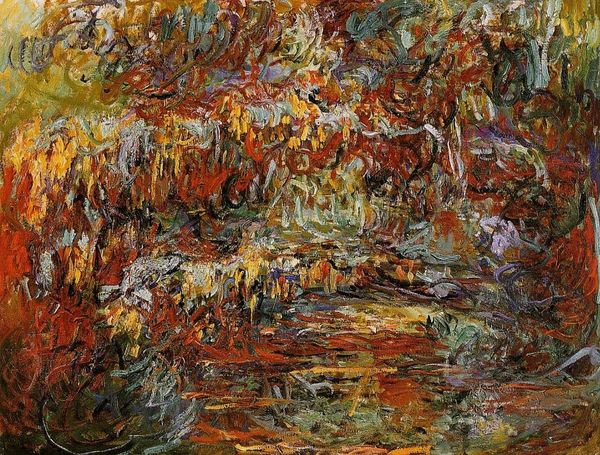
Dimensions: 35 x 45 3/4 in. (88.9 x 116.21 cm) (canvas)34 1/2 x 45 1/4 in. (87.63 x 114.94 cm) (sight)42 1/4 x 53 x 2 1/4 in. (107.32 x 134.62 x 5.72 cm) (outer frame)
Copyright: No Copyright - United States
Editor: So, this is Monet's "The Japanese Bridge," painted between 1923 and 1925. It's an oil-on-canvas piece. What strikes me is the layering of colors, almost obscuring the bridge itself. What are your initial thoughts on this work? Curator: What I see is Monet grappling with his fading eyesight, but also the legacy of Orientalism in France. This isn't just a landscape; it’s a public declaration. How did the fashion for all things Japanese shape art production at the time, and Monet's in particular? It shaped not just the aesthetics but also museum acquisition policies of the day, influencing what was considered "high art." Editor: That's fascinating. I hadn't really thought about the connection to museum policies. So, this bridge represents more than just a picturesque scene, it symbolizes the art world's embrace of Japonisme? Curator: Precisely. And consider how this imagery, deliberately "exotic," catered to a specific segment of the art-consuming public. It prompts a critical reflection: whose gaze are we adopting when we admire this work? How did colonial power structures enable such cultural exchange, and who benefitted from it? Editor: So it's about recognizing the power dynamics inherent in that cultural exchange, and understanding how that filtered into the artwork and its reception? Curator: Exactly. Thinking about what influences helped make this painting is also important. Consider the popularity of Japonisme. Did it democratize art or create other ways of excluding artists and points of view? Editor: It makes me see beyond the pretty colors and think about the bigger social and political forces at play. Thanks. Curator: Likewise, thinking through the visual elements with you brought new insight!
